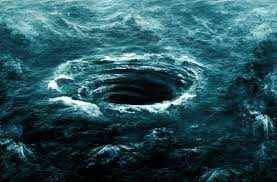The History of Bermuda triangle
The Bermuda Triangle, often called the "Devil's Triangle," is a region in the North Atlantic Ocean defined by the points of Miami, Bermuda, and Puerto Rico. This area has intrigued and mystified people for decades due to numerous reports of ships and aircraft disappearing under unusual circumstances. While some argue these incidents are exaggerated, the Bermuda Triangle has become a cultural phenomenon and is widely studied and discussed.
The Early History and Origins of the Bermuda Triangle Mystery
The story of the Bermuda Triangle begins as far back as the early explorers. Christopher Columbus himself documented strange occurrences while sailing through the region in 1492. Columbus reported seeing strange lights in the distance and having trouble with his compass, which appeared to malfunction. While there are logical explanations for these occurrences—such as meteorological or magnetic phenomena—these accounts sparked intrigue and speculation that would continue to grow over centuries.
However, the modern concept of the Bermuda Triangle as a "mysterious" region only began to take shape in the 20th century. In 1950, Edward Van Winkle Jones wrote an article for the *Miami Herald* describing a number of unexplained incidents of missing planes and ships within the area. Two years later, George X. Sand wrote an article titled "Sea Mystery at Our Back Door" in *Fate* magazine, further elaborating on strange disappearances in the area. These accounts began to catch the public's attention, but it wasn’t until 1964, when writer Vincent Gaddis coined the term "Bermuda Triangle" in his article "The Deadly Bermuda Triangle," that the region became widely known.
Famous Disappearances and Incidents
Perhaps the most famous case linked to the Bermuda Triangle is the disappearance of Flight 19 in 1945. On December 5, five U.S. Navy Avenger bombers departed from Fort Lauderdale, Florida, on a routine training mission but never returned. The flight leader, Lieutenant Charles Taylor, reported navigational issues, and as the flight continued, radio communication deteriorated. The five planes, along with a rescue aircraft that was later dispatched, were never found, leaving the fate of Flight 19 a mystery and fueling the legend of the Bermuda Triangle.
Another well-known case is the disappearance of the USS Cyclops, a Navy cargo ship that vanished in 1918 while carrying over 300 men and 10,000 tons of manganese ore. The Cyclops left Barbados, headed for Baltimore, and was never seen or heard from again. Despite an extensive search, no wreckage was ever found. The loss of the Cyclops remains one of the largest non-combat losses of life in U.S. Naval history, and its disappearance is often cited as evidence of the Bermuda Triangle’s dangers.
Theories and Explanations
Over the years, various theories have attempted to explain the phenomena associated with the Bermuda Triangle. One popular theory suggests that the area is subject to rogue waves—massive, unpredictable waves that can reach heights of over 100 feet and are capable of sinking large ships.
Others propose that underwater methane gas eruptions, or “methane hydrates,†could destabilize the water, reducing the buoyancy of vessels and causing them to sink rapidly. However, this theory has limitations, as no significant methane deposits have been found in the area that would cause such an effect.
Additionally, the Bermuda Triangle is located near one of the Earth's natural "magnetic anomalies," where true north and magnetic north align. This anomaly could theoretically cause navigational instruments to malfunction, leading ships and planes off course. While intriguing, scientific studies have shown that such magnetic anomalies are not unique to the Bermuda Triangle and occur in other parts of the world without causing such reported disappearances.
Skeptics argue that many of the disappearances attributed to the Bermuda Triangle are actually the result of human error, mechanical failure, or natural disasters rather than any supernatural cause. Studies have shown that the rate of incidents in the Bermuda Triangle is not higher than in any other heavily traveled region of the ocean. In fact, the U.S. Coast Guard and Lloyd's of London, an insurance company, both report that the Bermuda Triangle is no more dangerous than any other part of the ocean.
The Bermuda Triangle in Popular Culture
Despite skepticism and scientific explanations, the Bermuda Triangle remains a significant part of popular culture. Books, movies, documentaries, and television shows have all contributed to the mythology surrounding the area. In 1974, Charles Berlitz published *The Bermuda Triangle*, a book that became a bestseller and sparked even more interest in the phenomenon.
Today, the Bermuda Triangle serves as a symbol of the unknown and the unexplained. While scientific evidence may debunk many of the myths surrounding the Triangle, the allure of mystery and adventure continues to capture the imagination of people worldwide. Whether a natural phenomenon or a series of coincidences, the Bermuda Triangle remains one of the most captivating mysteries of the modern world.


